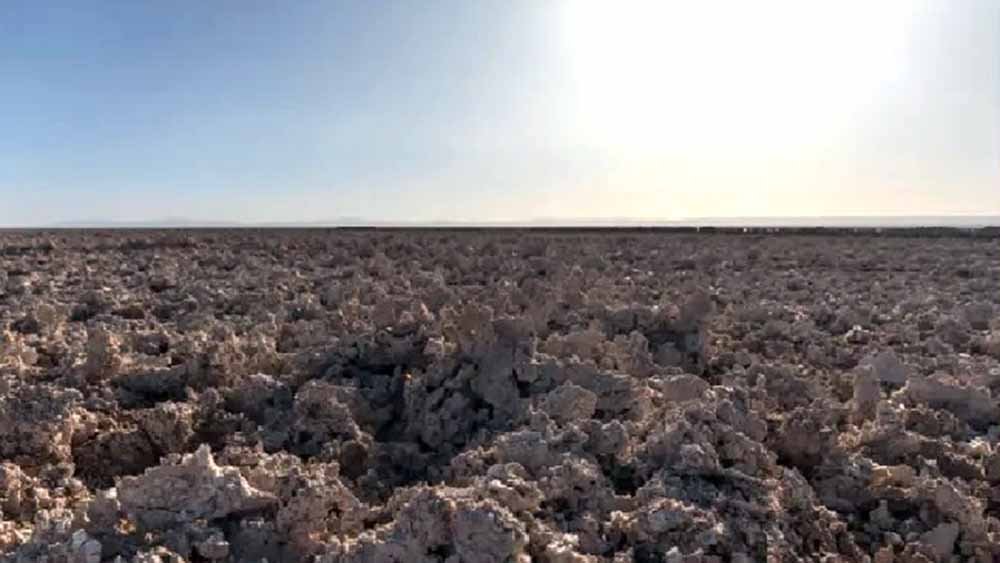Raquel Celina Rodriguez watches her step as she walks across the Vega de Tilopozo in Chile’s Atacama salt flats.
It’s a wetland, known for its groundwater springs, but the plain is now dry and cracked with holes she explains were once pools.
“Before, the Vega was all green,” she says. “You couldn’t see the animals through the grass. Now everything is dry.” She gestures to some grazing llamas.
For generations, her family raised sheep here. As the climate changed, and rain stopped falling, less grass made that much harder.
But it worsened when “they” started taking the water, she explains.
“They” are lithium companies. Beneath the salt flats of the Atacama Desert lie the world’s largest reserves of lithium, a soft, silvery-white metal that is an essential component of the batteries that power electric cars, laptops and solar energy storage.
As the world transitions to more renewable energy sources, the demand for it has soared.
In 2021, about 95,000 tonnes of lithium was consumed globally – by 2024 it had more than doubled to 205,000 tonnes, according to the International Energy Agency (IEA).
By 2040 it’s predicted to rise to more than 900,000 tonnes.
Most of the increase will be driven by demand for electric car batteries, the IEA says.
Locals say environmental costs to them have risen too.
So, this soaring demand has raised the question: is the world’s race to decarbonise unintentionally stoking another environmental problem?
Chile is the second-largest producer of lithium globally after Australia. In 2023, the government launched a National Lithium Strategy to ramp up production through partly nationalising the industry and encouraging private investment.
Its finance minister previously said the increase in production could be by up to 70% by 2030, although the mining ministry says no target has been set.
This year, a major milestone to that is set to be reached.
A planned joint enterprise between SQM and Chile’s state mining company Codelco has just secured regulatory approval for a quota to extract at least 2.5 million metric tonnes of lithium metal equivalent per year and boost production until 2060.
Chile’s government has framed the plans as part of the global fight against climate change and a source of state income.
Mining companies predominantly extract lithium by pumping brine from beneath Chile’s salt flats to evaporation pools on the surface.
The process extracts vast amounts of water in this already drought-prone region.
Faviola Gonzalez is a biologist from the local indigenous community working in the Los Flamencos National Reserve, in the middle of the Atacama Desert, home to vast salt flats, marshes and lagoons and some 185 species of birds. She has monitored how the local environment is changing.
She said lithium mining impacts microorganisms that birds feed on in these waters, so the whole food chain is affected.
She points to a spot where, for the first time in 14 years, flamingo chicks hatched this year. She attributes the “small reproductive success” to a slight reduction in water extraction in 2021, but says, “It’s small.”
Damage to flora has also been found in some areas. On property in the salt flats, mined by the Chilean company SQM, almost one-third of the native “algarrobo” (or carob) trees had started dying as early as 2013 due to the impacts of mining, according to a report published in 2022 by the US-based National Resources Defense Council.
But the issue extends beyond Chile too. In a report for the US-based National Resources Defense Council in 2022, James J. A. Blair, an assistant professor at California State Polytechnic University, wrote that lithium mining is “contributing to conditions of ecological exhaustion”, and “may decrease freshwater availability for flora and fauna as well as humans”. (BBC)
Sunday, August 31, 2025

